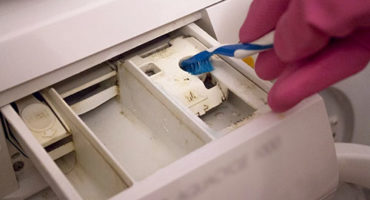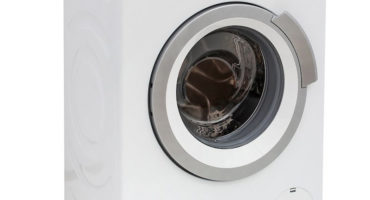Washing machines are often subject to breakdowns and malfunctions. A particularly common problem is the water in the washing machine. It may not be dialed at all, it may be dialed very poorly, and there may be different difficulties with this. The main thing is to identify the causes of the malfunction that has arisen and begin to eliminate it.
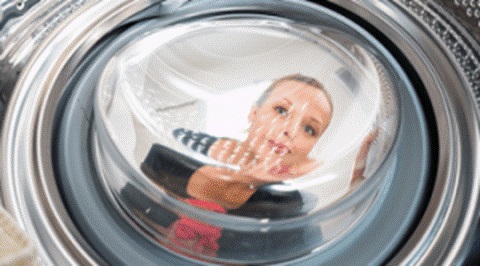
No water is collected in the washer - a common problem
If the “washing machine” drum is filled in accordance with all the rules (the amount of linen corresponds to the norm), the powder is filled up in the right amount, the correct program has been set, but the washing machine is collecting water slowly or not at all (sometimes the washing machine can constantly draw water) then you it’s better to try to find out why such problems occurred. If you cannot fix the malfunction yourself, then it is better to use the services of a professional master in the repair of household appliances.
First of all, in the event of a breakdown, you need to pay attention to checking such details:
- whether there is water in the tap and whether its pressure is sufficient for washing;
- perhaps the valve that supplies water to the “washer” is closed or malfunctioning;
- carefully inspect the hose, which is responsible for the supply of water, it can also fail.
If the water pressure is normal, the hose and valve are also in working condition, but there is still no water entering the washing machine, you will have to unload the machine, disconnect it from the mains and begin to find out the causes of this problem.
Next, we will consider the reasons why the washing machine does not pick up water.
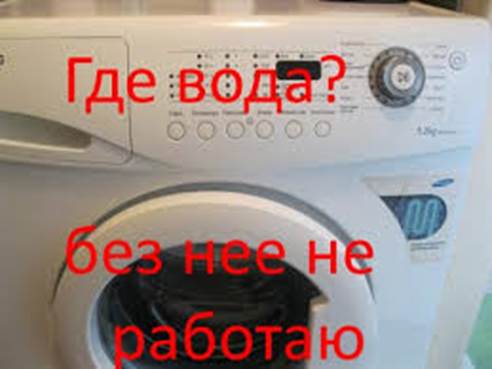
Out of service washing machine without water
Clogged inlet filter
This filter is a fine mesh, which serves to clean the water from rust and debris that appear after the repair work of the plumbing system. It is located behind the inlet hose, which is connected to the valve responsible for supplying water. It is necessary:
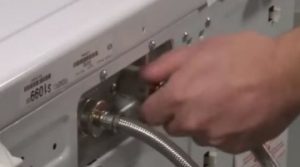
Clogged inlet valve as a cause of failure
- shut off the water supply and disconnect the inlet hose in which water may remain;
- using pliers pull out the washing filter, rinse it and thoroughly clean a toothbrush under an intense stream of water;
- to clear a hose of litter;
- put all the parts in place in the reverse order described above.
Optional filter contamination
Very often, special additional filters for water are put for the washing machine to clean it of rust, harmful debris, sand, make the water softer, to avoid the formation of plaque on the heater and the drum.
These filters are located in front of the inlet hose, so they must be removed, cleaned of various debris and washed under running water.
The door is loose or the hatch lock is defective
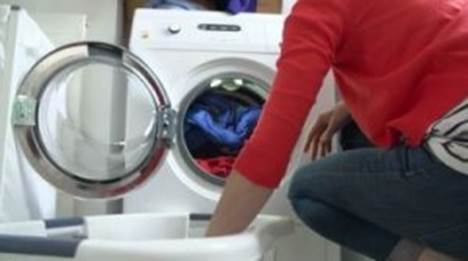
Hatch lock does not work
If the washing machine encountered such a problem, then in most cases the corresponding symbol in the form of a lock will flash on the front panel. The hatch blocking device, or UBL, prevents accidental sudden opening of the device door during high-speed operation of the machine during washing and spinning.
UBL can break as a result of a breakdown of the retainer part located under the tongue. And this breakdown occurs when the door of the machine is twisted or its hinges weaken after frequent use of the device.
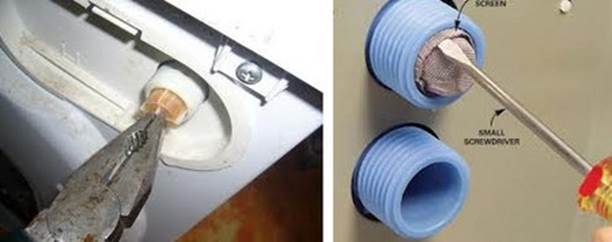
Miscellaneous Malfunctions
Sometimes a situation arises when the tongue-latch moves directly, because of which it simply does not fall into the keyhole of the case. The tongue can be skewed if the rod falls out of the metal located in the door and holding the tongue. If the door does not close tightly, no water will enter the washing machine.
To eliminate the malfunction and return the thermal lock during operation of the machine, you need to remove the "washing machine" door and return the stem to its original place or replace the thermal lock. It is better to contact a professional service technician for help in order to do everything efficiently and competently.
Water supply valve broke
Water enters the washing machine under the pressure generated in the water supply. The regulator of its receipt is a special valve at the inlet, which receives a signal from the control module with the door closed tightly. This module is located on the rear wall of the “washer”, and a water inlet hose is connected to it. If a quantity of water is needed, then the next step is a valve signal that shuts off the water supply. If the coil burns out, the electronic valve fails and stops working washing machine because of this, it does not flood. Replace the valve is better to ask a professional master.
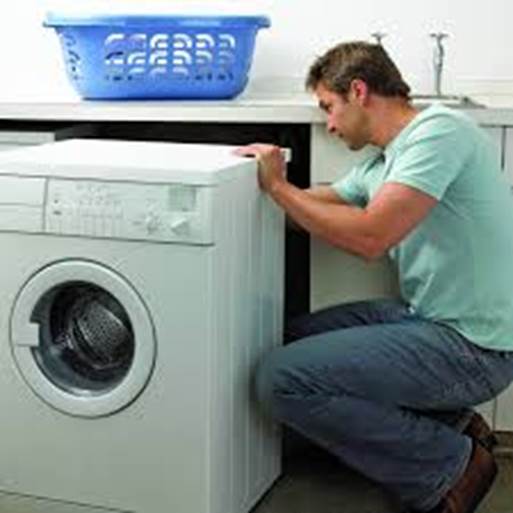
Valve problems
In addition, the valve responsible for the supply of water could break down due to unimpressed pressing of the inserts, as a result of which the dispenser in any mode turns out to be crowded. To understand this, you do not need to remove the dispenser. You will need a power cord on which there is a switch and contacts in the insulation covers. A valve inlet is connected to a water line with a certain pressure. When connected to a voltage winding, the valve will open. Then you should observe how soon the valve closes. If the turned off washing machine continues to draw water, the voltage is turned off, then the point is the loss of cuff flexibility, or the stem spring has weakened. Then be sure to replace the valve.
Control Module Issues
A software module is actually the central computer of the washing machine. It is he who regulates all the intellectual actions of the device with the help of special sensors that are responsible for all existing washing programs.
If the control element of the washing machine breaks, then the "washer" ceases to give a signal to "draw water." In this case, you will have to reflash or replace the control module. Before replacing, make sure that there are no other reasons described above that prevent the washing machine from collecting water. It can also provoke that water remains in small quantities in the washing machine after washing.

Control Module Issues
Washing machines that have mechanical controls (Bosch, Candy, Ardo, and others) may suffer from a malfunction of the programmer, as a result of which the device stops collecting water.
The program is selected by turning the special mechanical knob. In general, electromechanical programmers are quite complex parts that ensure the functioning of the washing machine. These elements are used even in those units in which microcontrollers are present. Unfortunately, new programmers are quite difficult to find, sometimes they even have to be ordered and wait for delivery for a long time. But an experienced and professional master must know the device of the contact system of the programmers, so he can easily fix them. Most likely several contacts burned out, because of which there was a breakdown.
Rule 1. If the programmer of your washing machine has a complex structure, do not rush to disassemble it. First you need to clean the contacts by spraying a special cleaning fluid into the compartment with burnt contacts. If they are not burned badly, then their conductivity can be completely restored.
Tip 2.Before disassembling the programmer, which is part of the microcontroller department, you must make sure that it is working properly.
Problems with the water level sensor
The main task water level sensor, or pressostat, is a clear measurement and regulation of the amount of water required for washing, which comes from the water supply. If the water sensor becomes faulty, the “washer” cannot control the water level. Because of this, the washing machine draws water, but does not wash.
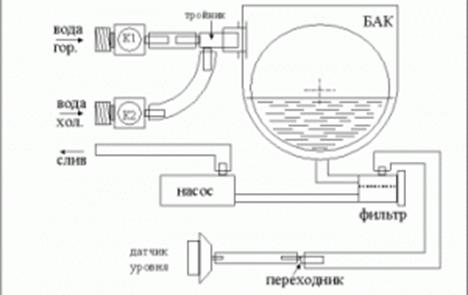
Malfunctions in the water level sensor
From the hose, which is responsible for the pressure, and the lower chamber of the sensor, air enters the water tank, during which it presses on the membrane, which is a flexible rubber diaphragm. It has a special push pad equipped with a plastic tip. When the air presses on the diaphragm, it begins to bend, as a result of which the spring, which enters the contact group of the sensor, is pushed through the tip of the pressure pad.
When the required amount of water accumulates in the tank, the contacts switch, and the power to the valves responsible for the water supply is turned off. The washing machine starts the washing process. The laundry becomes wet, absorbing a certain amount of water. The pressure sensor directs power to the valve responsible for the water supply, and the “washer” collects the right amount of water.
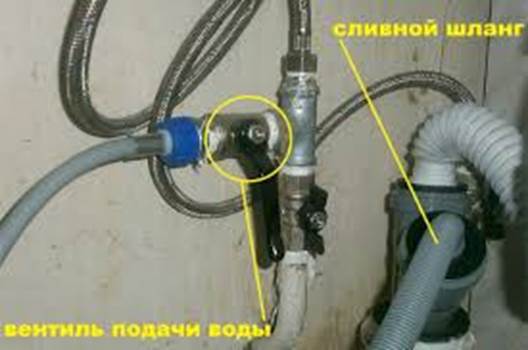
Check fluid valve
To accurately control the correct switching, you need to use an ohmmeter and resort to the method of calling. They check the washing machine in the off state, so that the heater does not burn out and some serious malfunctions do not occur. Information about the pressure levels that a device can carry is usually indicated on its body.
To check the pressure sensor, you must:
- disconnect the pressure hose;
- attach a rubber or silicone hose instead;
- drive into the hose so that contact spring switching occurs (characteristic clicks will be heard).
If the drain pump fails (impeller jam, wear of the part, clogging of the drainage system), very little water comes into the washing machine during washing, or it does not enter at all. In this case, it is necessary to clean the drainage system and verify that the pump is working, in some cases it will need to be replaced.
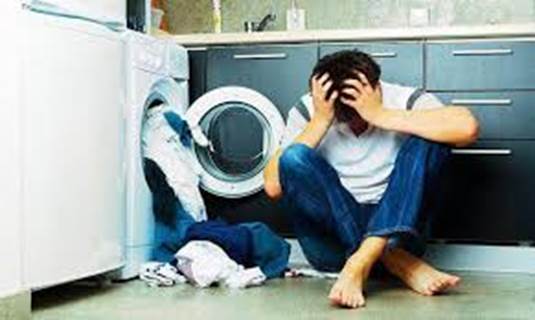
No water build up - easy fix
If water flows from the tap, its pressure is sufficient, and it may well go to the “washer”, all filters and hoses are cleaned and in good condition, but the washing machine does not collect water well, does not hold it, or draws water for a very long time, then It is worth asking for help from a professional master.
 Features of choosing a washing machine with dryer. Principle of work, pros and cons
Features of choosing a washing machine with dryer. Principle of work, pros and cons  Repair of washing machines through an online service: the convenience and benefits are obvious
Repair of washing machines through an online service: the convenience and benefits are obvious 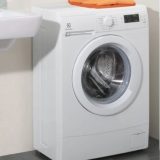 Washing machine: practical tips for choosing
Washing machine: practical tips for choosing 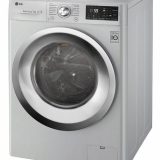 Rating of the best washing machines 2018-2019
Rating of the best washing machines 2018-2019 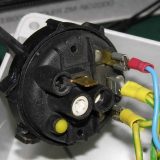 How to check the water level sensor (pressure switch) in the washing machine, repair and replacement of the sensor
How to check the water level sensor (pressure switch) in the washing machine, repair and replacement of the sensor 